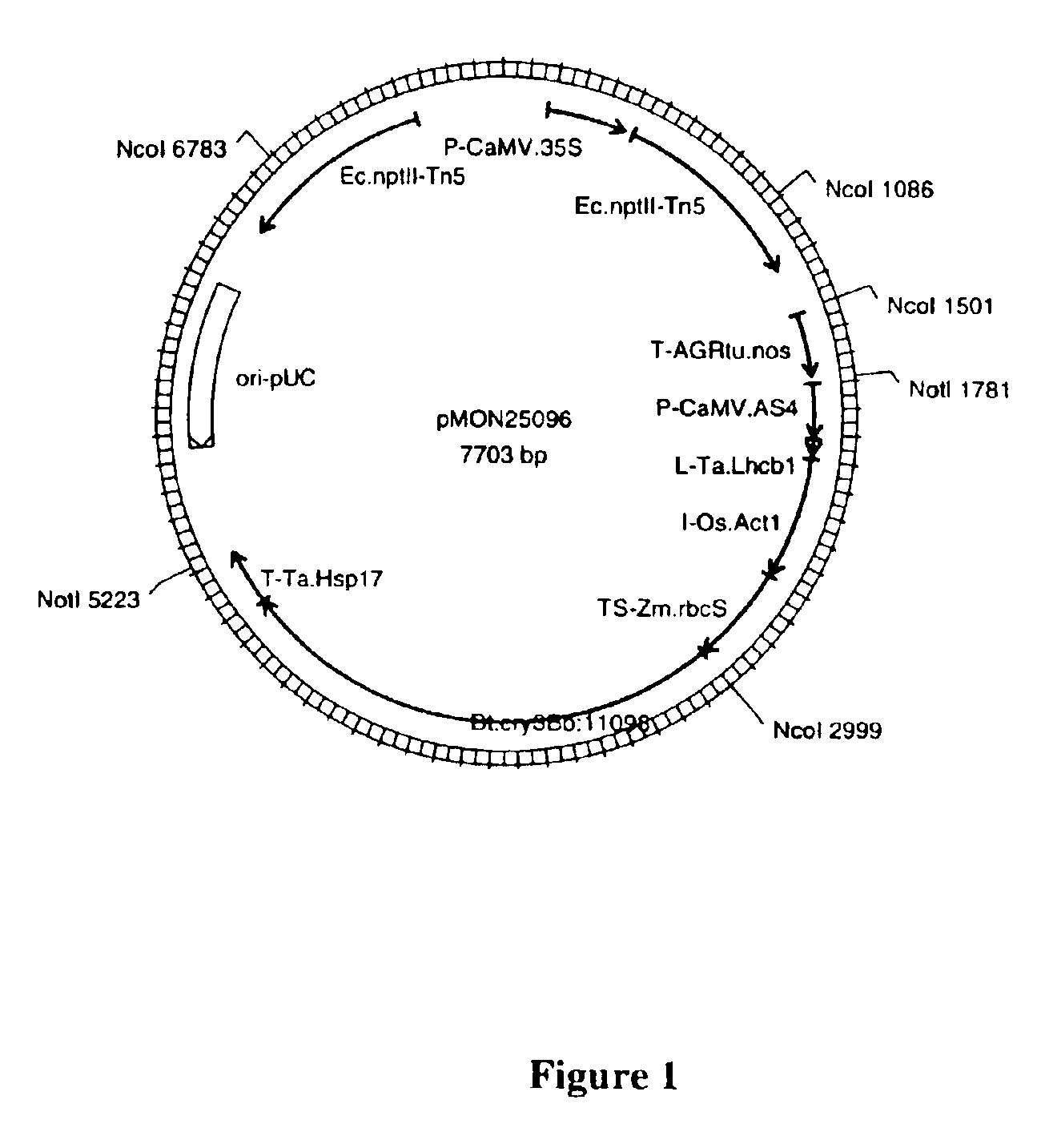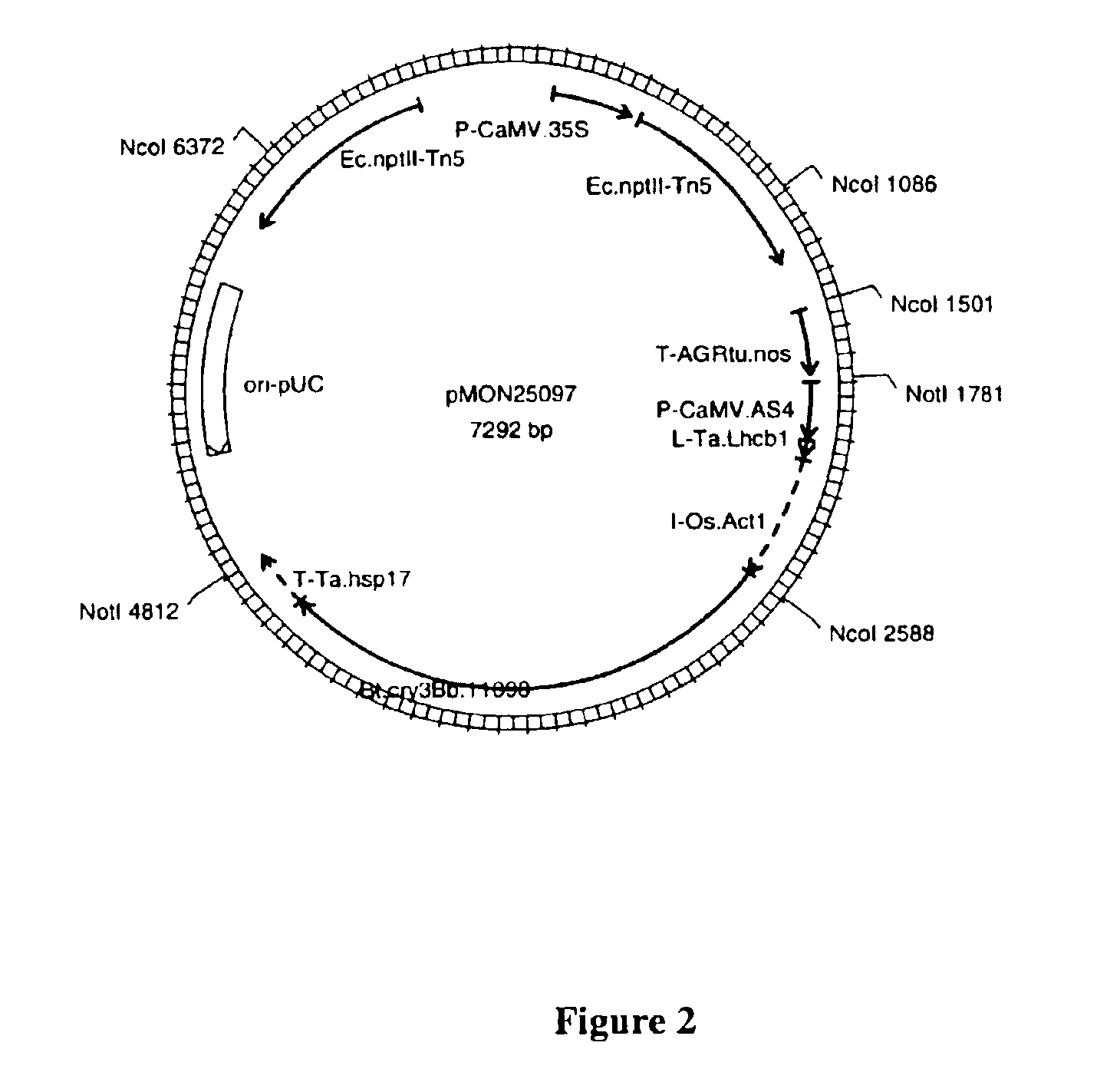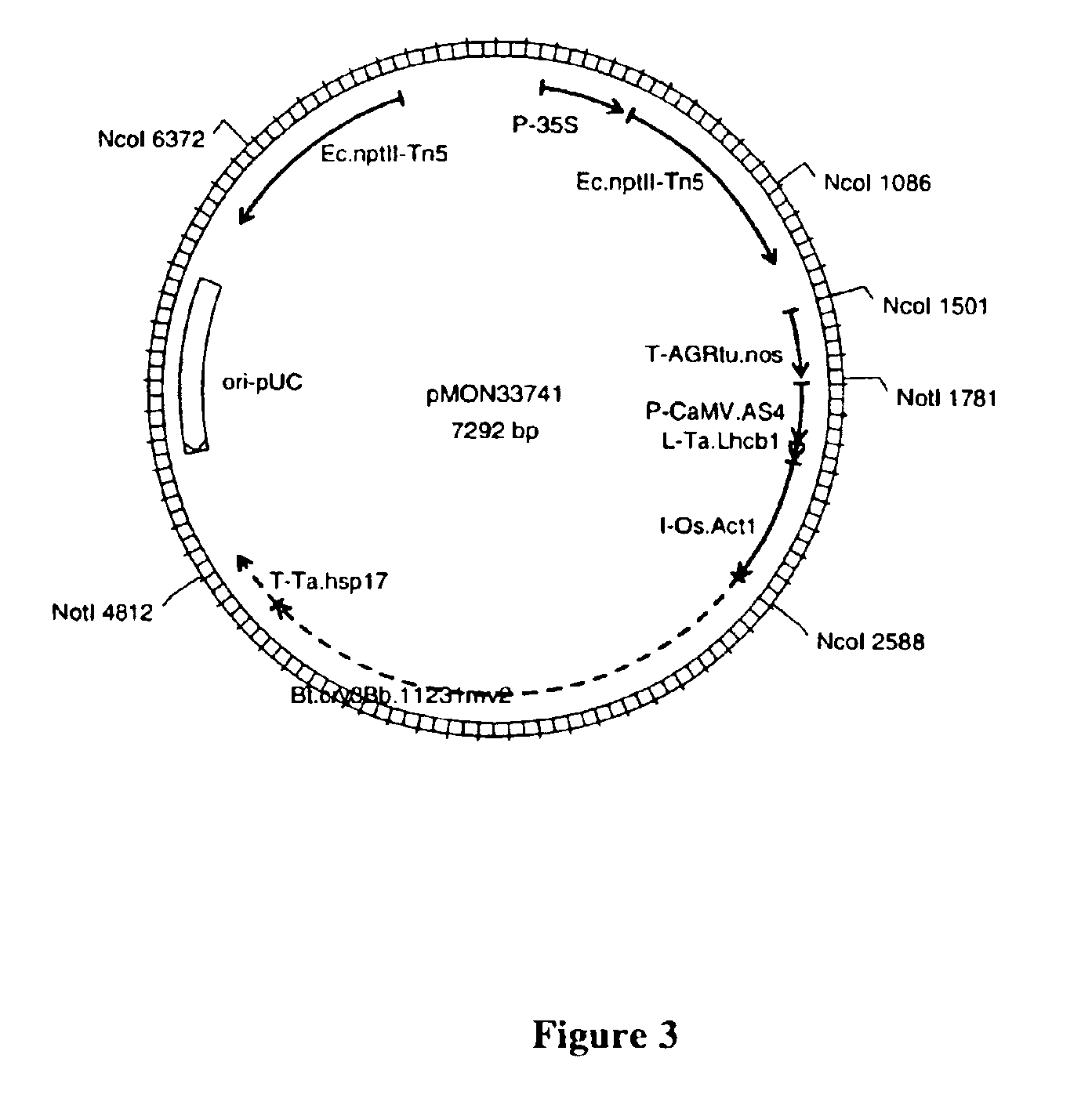Expression of Cry3B insecticidal protein in plants
a cry3b insecticidal protein and plant technology, applied in the field of transgenic plants, can solve the problems of insect of various orders, all field crops, plants, commercial farming areas are susceptible to attack, coleopteran and lepidopteran pests, etc., and achieve the effect of avoiding the occurrence of specific insecticidal proteins
- Summary
- Abstract
- Description
- Claims
- Application Information
AI Technical Summary
Benefits of technology
Problems solved by technology
Method used
Image
Examples
example 1
5.1 Example 1
Isolation, Characterization, and Identification of Cry3 Proteins and Genes, and Construction of Amino Acid Sequence Variants Thereof
[0167]Means for identifying and characterizing Coleopteran toxic gene products are well documented in the art, and methods for isolating, characterizing and identifying the genes which encode such gene products are also well known in the art. In addition, the means for producing amino acid sequence variants of such Coleopteran toxic δ-endotoxin proteins are also well known. In particular, Van Rie et al. (U.S. Pat. No. 5,659,123; 1997) identify Cry3A and D toxins which exhibit Coleopteran inhibitory properties, and also set forth a method for identifying mutants which can be constructed which have reduced insecticidal activity with reference to the wild type protein. Van Rie et al. describe how those particular mutants can be further manipulated to identify amino acid sequence variant toxins which exhibit increased insecticidal activity with...
example 2
5.2 Example 2
Construction of Monocot Plant Expression Vectors for the Cry3Bb Variants
Design of Cry3Bb Variant Genes for Plant Expression
[0168]For efficient expression of the Cry3Bb variants in transgenic plants, the gene encoding the variants must have a suitable sequence composition (Diehn et al, 1996). One example of such a sequence is shown for the v11231 gene (SEQID NO:7) which encodes the 11231 variant of the Cry3Bb protein (SEQID NO:8) exhibiting Diabroticus activity. This gene was derived via mutagenesis (Kunkel, 1985) of a Cry3Bb synthetic gene (SEQID NO:5) encoding a protein essentially homologous to the protein encoded by the native Cry3Bb gene (Gen Bank Accession Number m89794; SEQID NO:1). The following oligonucleotides were used in the mutagenesis of the original Cry3Bb synthetic gene (SEQID NO:5) to create the v11231 gene (SEQID NO:7)
[0169]
Oligo #1:TAGGCCTCCATCCATGGCAAACCCTAACAATC(SEQ ID NO:40)Oligo #2:TCCCATCTTCCTACTTACGACCCTGCAGAAATACGG(SEQ ID NO:41)TCCAACOligo #3:GA...
example 3
Increased Expression of a Cry3Bb Protein in Transgenic Maize
[0183]Expression of a Cry3Bb protein was compared in corn plants transformed with standard or preferred Cry3Bb expression vectors. Plants transformed with the improved vectors consistently demonstrated significantly higher levels of expression of Cry3Bb when compared to plants transformed with the standard Cry3Bb vectors. A standard Cry3Bb plant expression vector pMON33710 contains an expression cassette composed of an enhanced CaMV35S promoter sequence (P-CaMV.35S, SEQID NO:29), a Zea mays Hsp70 intron sequence (I-Zm.Hsp70, SEQID NO:33), a non-naturally occurring sequence encoding Cry3Bb variant protein v11231 (Bt.cry3Bb.v11231, SEQID NO:7), and a nopaline synthase transcription termination and polyadenylation sequence (T-AGRtu.nos, SEQID NO:34). Another standard Cry3Bb plant expression vector pMON33709 contains an expression cassette composed of an enhanced CaMV35S promoter sequence (P-CaMV.35S, SEQID NO:29), a Zea mays H...
PUM
| Property | Measurement | Unit |
|---|---|---|
| concentration | aaaaa | aaaaa |
| volumes | aaaaa | aaaaa |
| optical density | aaaaa | aaaaa |
Abstract
Description
Claims
Application Information
 Login to View More
Login to View More - R&D
- Intellectual Property
- Life Sciences
- Materials
- Tech Scout
- Unparalleled Data Quality
- Higher Quality Content
- 60% Fewer Hallucinations
Browse by: Latest US Patents, China's latest patents, Technical Efficacy Thesaurus, Application Domain, Technology Topic, Popular Technical Reports.
© 2025 PatSnap. All rights reserved.Legal|Privacy policy|Modern Slavery Act Transparency Statement|Sitemap|About US| Contact US: help@patsnap.com



